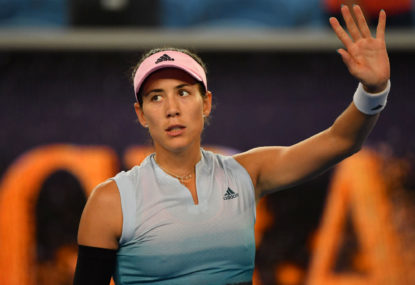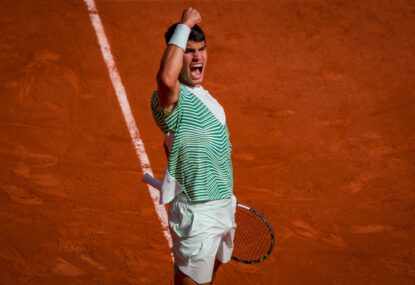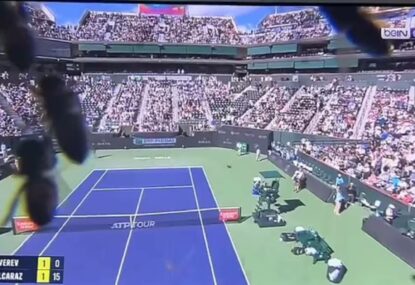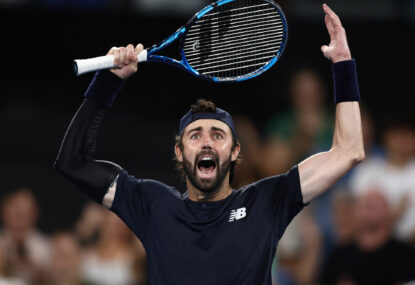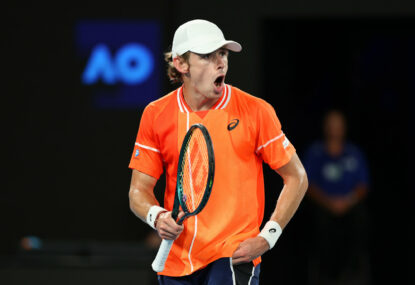This year’s French Open starts on Sunday 27 May, and runs through to June 11.
The draw, which was conducted on Thursday night AEST, has thrown up some fascinating matchups – most of the interest centres around whether Rafa Nadal can win an unprecedented 11th Roland Garros title and the return of Serena Williams and Victoria Azarenka to Grand Slam tennis.
Women’s draw
Looking first at the women’s draw, the first round has thrown up a blockbuster between two former Roland Garros champions – Svetlana Kuznetsova (2009 winner), and Garbine Muguruza (2016 winner). Muguruza would have to be favoured to win that one, but you can never count out Kuznetsova on clay.
That match aside, all the interest in the first round has been on Serena William’s draw – there has been much talk in the lead-up to the tournament that she could be given a seeding, due to her protected ranking. However, that has not been forthcoming, and so she finds herself at the mercy of the draw.
It has worked out well for her – she faces Kristyna Pliskova, ranked 70, in the first round, and could face Aussie Ash Barty in the second round. After that, the draw has her facing a 13-16 ranked seed in the third round, and a 5-8 seed in the fourth round (likely to be any of Jelena Ostapenko, Karolina Pliskova, Caroline Garcia, or Petra Kvitova).
It will be intriguing to see how Serena handles this draw – on the face of it, it looks to be one of the better draws she could have received, given the absence of any of the top four seeds; however, the players mentioned could still pose issues for her, given she has not played many tournaments in the lead-up to Roland Garros.
She does have form as a dangerous unseeded player – in 2007, she famously came into that year’s Australian Open ranked 81, and went on to win the tournament. It would be a tough ask for her to do the same here given the strength of the women’s draw and the surface, which is not her favourite, but with Williams, anything is possible.
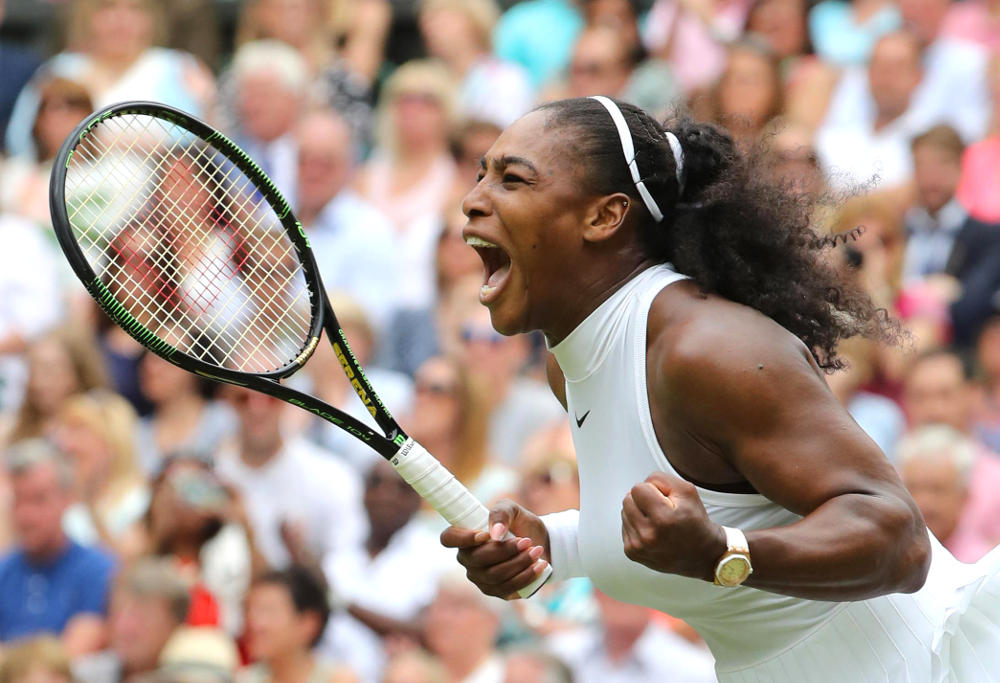
( The Yomiuri Shimbun via AP Images )
The other player whom interest centres on is Victoria Azarenka. She has been embroiled in a much-publicised custody battle over her son, Leo, for the past two years, which prevented her from taking her son outside the US. Azarenka returned to competitive play at Indian Wells earlier this month.
Clay has never been her strongest surface, but as a former world number one and Grand Slam champion, she cannot be discounted. However, she does have a tough draw, with a second-round matchup against defending champion Ostapenko on the cards.
The women’s draw has set up some tantalising quarterfinal possibilities/projections, which could pit aspiring winner and the in-form clay-court player, Elina Svitolina, against Ostapenko, while the Australian Open champion could face two-time Wimbledon champion Petra Kvitova, former champion Muguruza could face Karolina Pliskova and world number one Simona Halep could face in-form French player Garcia.
Another point of intrigue is that any of Muguruza, Wozniacki, Svitolina, Pliskova, or Garcia, could obtain the number one ranking at tournament’s end, such is the evenness of the women’s draw. Svitolina looks in ominous form – having defended her title in Rome last week, her first real test could come against Ostapenko; before that, she shouldn’t really be troubled.
Pliskova, on the other hand, as a nightmare draw – she may have to face both Serena and Maria Sharapova, as well as Muguruza if she is to claim the title.
Men’s draw
All eyes here will be on Rafa Nadal, and whether he can clinch an unprecedented 11th Roland Garros title. He has been in imperious form in the lead-up tournaments, winning his 11th Monte Carlo and Barcelona titles, as well as an eighth Italian Open title last week in Rome (defeating world number four Alexander Zverev), and amassing a record 50-set winning streak on a single surface in the process.
His loss to eighth-ranked Dominic Thiem in Madrid was his first loss on clay since Thiem defeated him in Rome 12 months earlier. With no Andy Murray or Roger Federer in the draw, Nadal’s main competitors loom as long-time rival Novak Djokovic, Thiem, Zverev, and perhaps Belgian David Goffin, who is usually an excellent clay-court player.
Making Nadal’s quest easier is his favourable draw, with his first real test to come in the fourth round, where he could face either American Jack Sock or Canadian young gun Denis Shapovalov. The highest seed he could face before the final is either Marin Cilic or Juan Martin del Potro. He’s on the opposite side of the draw to Goffin, Djokovic, Thiem, Zverev, and Grigor Dimitrov.
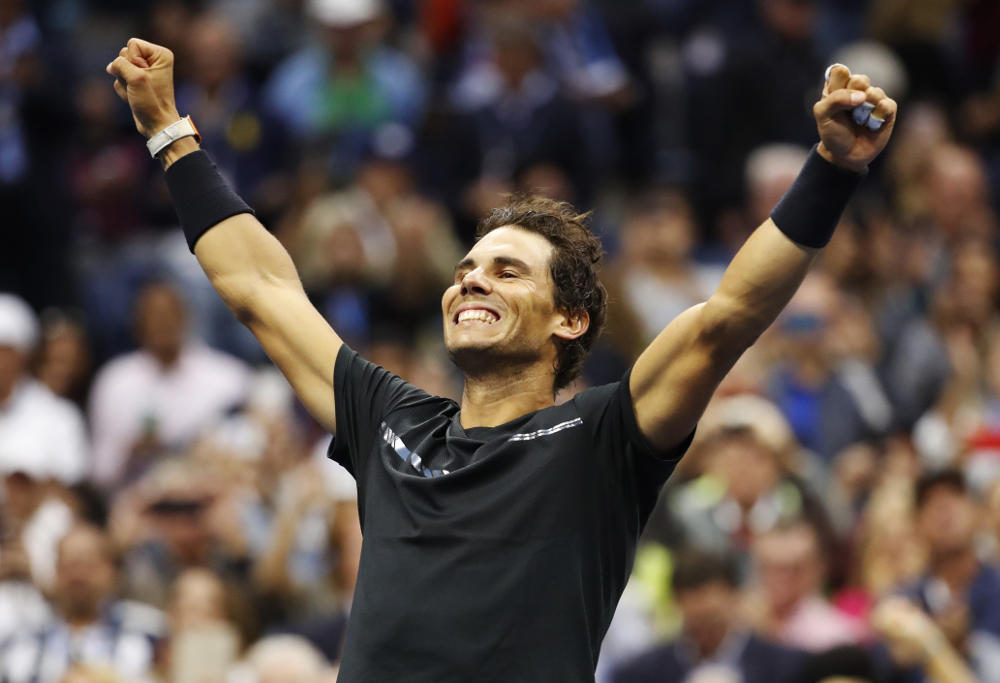
(AP Photo/Julio Cortez)
Given Zverev’s positive showing in Rome, the inevitable questions have arisen over whether he is finally ready to win a Grand Slam. The 21-year-old has a woeful 0-7 record against top-50 players at Grand Slams, which is astonishing for a player of his calibre.
I think Zverev may still be a year or so off winning a Slam, but Roland Garros certainly shapes as a good opportunity for him to make it deep into the tournament, as clay is arguably his best surface. Making this difficult, however, is the fact that he is in a loaded section of the draw, and could face fellow young-gun and clay-court aficionado Dominic Thiem in the quarterfinals.
For his part, Thiem could face a challenge in the second round when he takes on young Greek player Stefanos Tsitsipas, who is in rare form – he made the final of the Barcelona Open earlier this month, as well as defeating Shapoval in Monte Carlo and making the semi-finals in Estoril.
This has seen him rise 50 places in the ATP rankings, the largest rise of any player this year.
Former champion Djokovic will be another interesting case – fresh off a semi-final loss to Nadal in Rome, he faces a qualifier first up and has looked to be finding some of the form he displayed before his elbow injury. He won’t face Nadal until the final but will need to make it through possible tough challenges from veteran clay-courter David Ferrer and another Spaniard in Roberto Bautista Agut in the second and third rounds.
He is in the same half of the draw as Goffin and Dimitrov, who would both pose stern challenges should they make it that far.
How have the Australians fared?
In a word, woefully. Matt Ebden has perhaps the most reasonable draw, facing Tomas Fabbiano in the first round, and a possible clash with young gun Borna Coric in the second round. Otherwise, it’s a nightmare draw for the Aussies.
Nick Kyrgios will play fellow Aussie Bernard Tomic in the first round after Tomic won through qualifying on perhaps his least-favourite surface. Surprisingly, it will be the first time the two have played each other. Given Kyrgios comes into the tournament under an injury cloud, it shapes as an intriguing match.
John Millman’s terrible Grand Slam draw luck continues; he plays Shapovalov first up, while wildcard Alex ‘the Demon’ De Minaur faces Brit Kyle Edmund, an Australian Open semi-finalist this year and James Duckworth comes up against Australian Open finalist Marin Cilic.
On the women’s side, it doesn’t get much better. Ash Barty has a straightforward assignment in the first round against Vikhlyantseva but is then slated to play Serena Williams in the second round, which would be a huge challenge. Ajla Tomljanovic comes up against world number four Elena Svitolina, while Daria Gavrilova faces Romanian Sorana Cirstea, a tricky player who could give Gavrilova some issues.
Former finalist Sam Stosur faces Yanina Wickmayer first up, a player with whom she shares an even head-to-head record, but who could pose challenges. However, clay being Stosur’s favourite surface, I would expect her to be the Australian player who advances the farthest in the tournament.
Fun facts from the Twittersphere
Roland Garros preview: Nicolas Mahut receives a Grand Slam main draw wild card for the 12th occasion, extending his record for most GS appearances as a wild card. He also holds the record for most wildcards at Roland Garros (8).
































































































